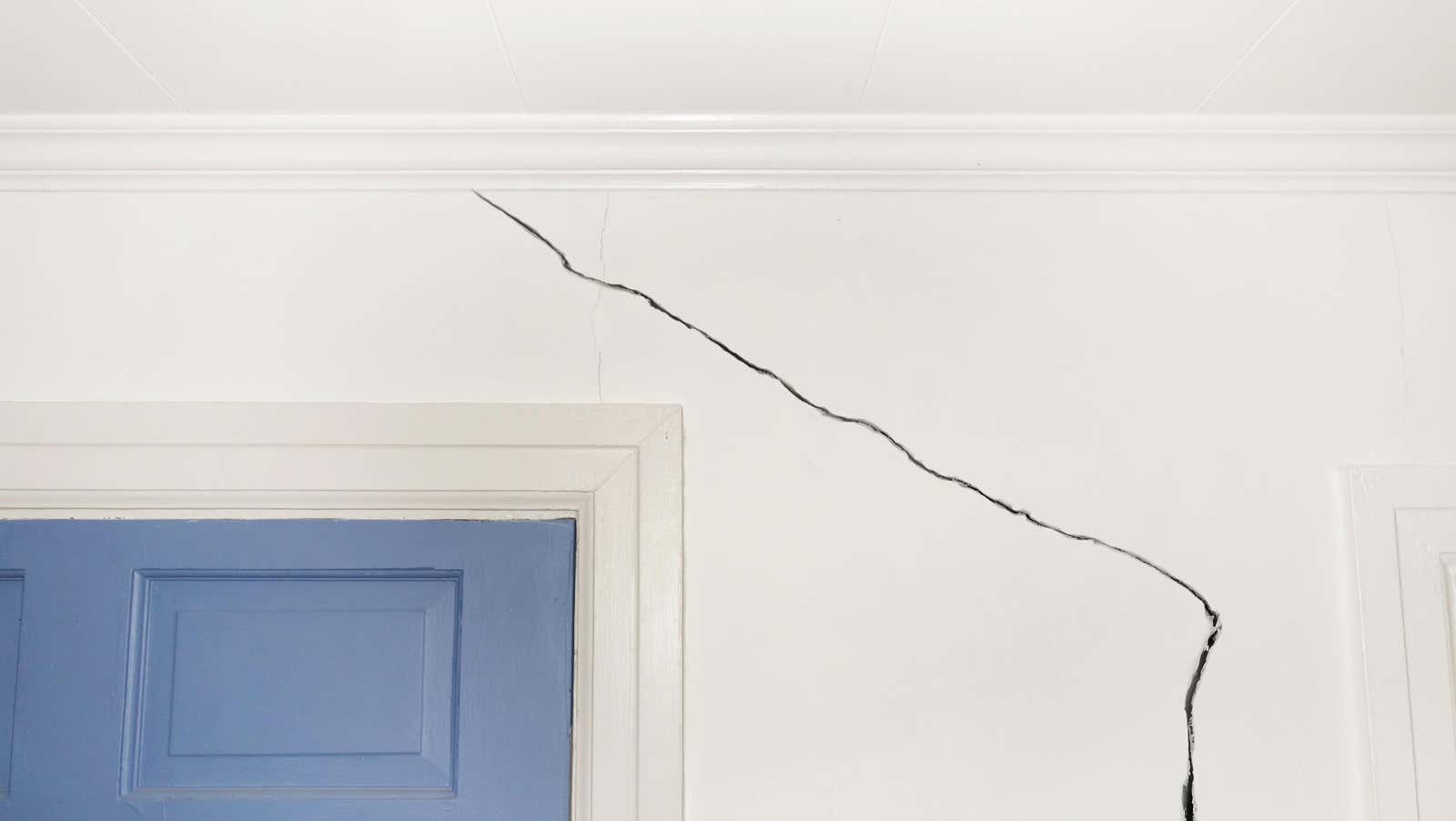How to Tell If This Crack in Your Wall Is Really the Problem

Cracks in your wall can bring a sense of impending doom, especially if your home is relatively new. Is it just a cosmetic defect that can be fixed with putty? Or are you going to be buried in rubble?
The good news is that most cracks are fairly superficial and easy to fix, so it’s probably not necessary to evacuate your family and call the Federal Emergency Management Agency when you notice a thin crack in a wall. The bad news is that some cracks can indicate serious problems that you will have to deal with, and the solution is likely to be costly. Here’s how to determine which scenario you’re dealing with.
In which direction is the crack in your wall?
The first thing to note is the direction of your crack. Thin, straight vertical cracks in drywall or plaster tend to cause the least problems, as they are almost always the result of house “settlement,” an all-encompassing term describing the change in a house’s structure over time. Newly built houses tend to sag more abruptly: the foundation may sag a bit, and the wood used in the frame may dry out, causing slight shrinkage. If the home isn’t occupied all the time—for example, a summer home is closed for eight months out of the year—lack of climate control can also lead to cracks.
These kinds of cracks can be easily repaired and shouldn’t be a concern – in fact, if your house is brand new, you should probably wait a year before even trying to fix them, because you’ll probably see a few more cracks in the home. takes its final position.
Smooth, horizontal cracks are also usually not too disturbing. If they’re thin and appear right where two drywall joints meet, it’s probably just crap tape. Drywall technicians often skimp on joint sealer (or “mud”) when they’re in a hurry, which looks OK on the surface but can cause the tape to come off the joint, resulting in a thin horizontal crack. Repairs include either resealing the joint, or possibly gluing tape, as well as quick puttying and painting.
If your crack is at an angle, is a scalloped lightning, or a combination of horizontal and vertical cracks in a stair-step pattern, it may indicate a more serious problem. Such cracks should be inspected by an engineer and repairs should be scheduled as soon as possible.
How big is the crack in your wall?
Another factor in determining how much to worry about wall cracks is their size. Measure the width of the crack. Generally speaking, anything less than a quarter of an inch wide is probable – possible! – is not a big concern. It is most likely a “stress crack” due to the aforementioned settling or other minor shifts in your structure. If it is wider, it may indicate more serious changes, especially if the crack is relatively recent, as opposed to a crack inherited from a previous owner twenty years ago.
Where is the crack?
Finally, the location of the crack matters. Cracks aligned with drywall joints, as mentioned, probably don’t matter much. Similarly, the thin cracks that appear around doorways and windows are probably not serious either. Because windows and doorways interrupt the timber studs of your walls, they have a lot of extra framing around them to maintain load-bearing capacity and structural integrity, which also increases the chance of surface sagging cracking. Even cracks at an angle in these places may not pose much of a problem. If your doors and windows still function smoothly, with no sticking, and no obvious deformation (if your door doesn’t have an odd gap at the top or bottom, for example), it’s probably just a stress crack.
Discoloration and peeling nails
And the last thing you should pay attention to is whether there are yellowish or brownish spots on your crack. If so, it is most likely caused by water intrusion. A small amount of water will drip down until it has nowhere to go, and then soak into the drywall or plaster, weakening it. Even if you never noticed water, a stain may indicate that there was water.
Good news? This crack will be easy to fix. The bad news? You will have to figure out where the water is coming from or the damage will come back. If water infiltration occurs for a long time, you will also have to check for mold and a rotten frame.
Another sign of water intrusion or other problems is what’s called “nail popping” when the heads of the nails or screws holding your walls together begin to appear, first appearing as bulges in the wall and possibly eventually breaking through. Nail tears on their own are minor problems caused by wood shrinkage, but if they appear near a crack, you may have a more serious problem. If a screw or nail has broken through the wall, inspect it for rust, a sign of a water problem.
Cracks in your walls don’t necessarily indicate that your home is crumbling around you, but it’s always best to take a good look at them before dismissing them as cosmetic. And if they point to a more serious problem, don’t delay calling a civil engineer to inspect the site. Better to be sure a crack is nothing than waking up to a brand new, unplanned outdoor living room.